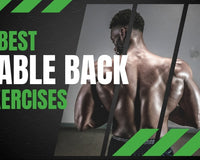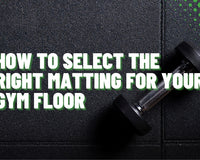If you're looking to increase the strength and size of your chest, shoulders, and arms, one of the best possible exercises you can do is the overhead press. The overhead press comes in many shapes and forms, although they all really work the same muscles.
Depending on the exact positioning, it might target one muscle slightly more than another, but generally speaking, there are three main muscles that the overhead press works. So, what does the overhead press work?
What is the Overhead Press?

The overhead press is an exercise that involves pressing a weight vertically and directly up above your head.
Generally speaking, you would start with the weights at shoulder level with your hands spread at shoulder width, with your elbows tightly tucked into your body, and then press upwards until your arms are almost fully extended, and then lower your arms back down to the starting position.
It's a great exercise to work several muscles in your arms and upper body. Furthermore, there are also many variations of the overhead press, as well as many different ways to do it, all of which we'll talk about today. However, we do want to start off by talking about specific muscles that the overhead press works.
Muscles Targeted by the Overhead Press
When you do the overhead press, there are three main muscles that are targeted. These include the front deltoids, otherwise known as your front shoulder muscles, your triceps, which are the muscles on the rear of your upper arm, and your upper chest more upper pectoral muscles. Let's take a closer look at each one.
Front (and Side) Deltoids

The primary muscle worked by the overhead press is the front deltoid, otherwise known as the anterior deltoid. This is the muscle located at the top front of the shoulder and is connected to your clavicle.
This is a very important muscle for a number of reasons. The main purpose of the front deltoids is to help your arm move forward and upwards.
When you have your arms at your sides with your palms facing backwards, and you lift your arms straight up and forward, those are your front deltoids at work. Your front deltoids are also responsible for vertical lift, or in other words, for pushing things straight up above your head. To a certain degree, they also help to maintain the function of your rotator cuff.
Although not to the same degree as the front or anterior deltoid, the shoulder or overhead press also works the side deltoid, which is the part of the deltoid on the outside of the shoulder.
This is a very important muscle for raising your arm laterally, raising it sideways. It's not targeted nearly as much as the anterior deltoid, but it still gets a bit of work thanks to this exercise.
Related: Top Side Delt Exercise For Boulder Shoulders
The Upper Chest
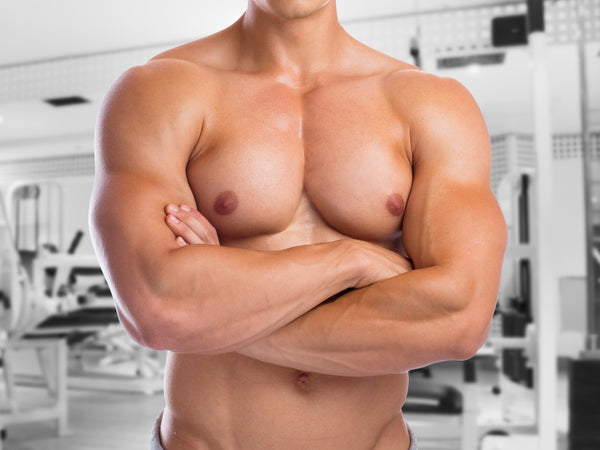
The upper chest, or the upper part of your pectoral muscles, is also worked out by the overhead press. They help to create a pushing motion and to stabilize the shoulders while doing this exercise.
On their own, the upper pectoral muscles are responsible for bringing your arm up and across your body at a diagonal angle. To a certain degree, they also help with pushing motions.
Furthermore, if you want to develop a big chest, then it's those upper pectoral muscles that you need to grow in size.
Related Post: What Muscles Does Arnold Press Work?
The Triceps
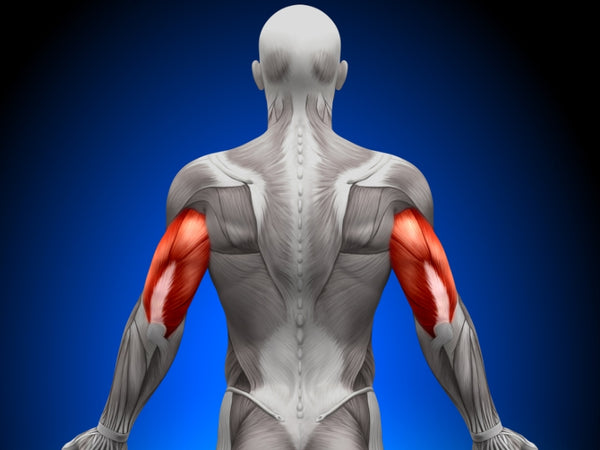
The third and final main muscle or muscle group that the overhead press targets is the triceps. The triceps or triceps brachii is a large and thick muscle that is on the dorsal section of the upper arm. When it is well-developed, it often looks like a horseshoe.
The number one function of the triceps muscles is to help you extend your arm at the elbow. Triceps muscles aren't only important for our mobility, but also for pushing motions.
Whenever you push, you engage your triceps, such as when you do a pushup. Any pushing motion you do requires you to have strong triceps. It's quite heavily targeted during the overhead press.
**Upper and Lower Back**
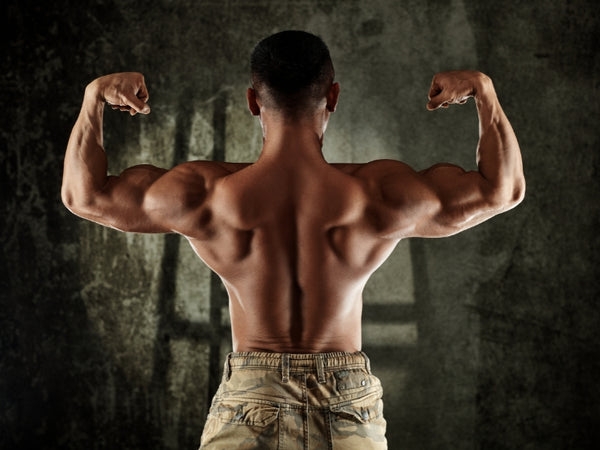
Yes, we said that the overhead press primarily targets three muscles, the front deltoids, the upper chest, and the triceps. However, depending on the type of overhead press that you do, you may also target your lower and upper back.
This is especially the case if you are doing an upright or standing overhead press. If you're doing a standing overhead press, it means that you need to engage your lower back for balance and support. A strong lower back helps keep your back straight and your body upright.
At the same time, as far as your upper body is concerned, the overhead press also works out to the trapezius muscle. This is the muscle that runs from your shoulder to your neck.
The trapezius muscle is important for posture, although it's also important for rotating your head, depressing and elevating your shoulders, internally rotating the arm, and bending the neck sidewards.
Related: 5 Best Lower Trap Exericses
Differences Between Standing and Seated Shoulder Press
If you go to your gym, you might see people doing both standing shoulder presses and seated shoulder presses. Well, both of these have their advantages and disadvantages, so let's find out what they are.
Seated Overhead Press
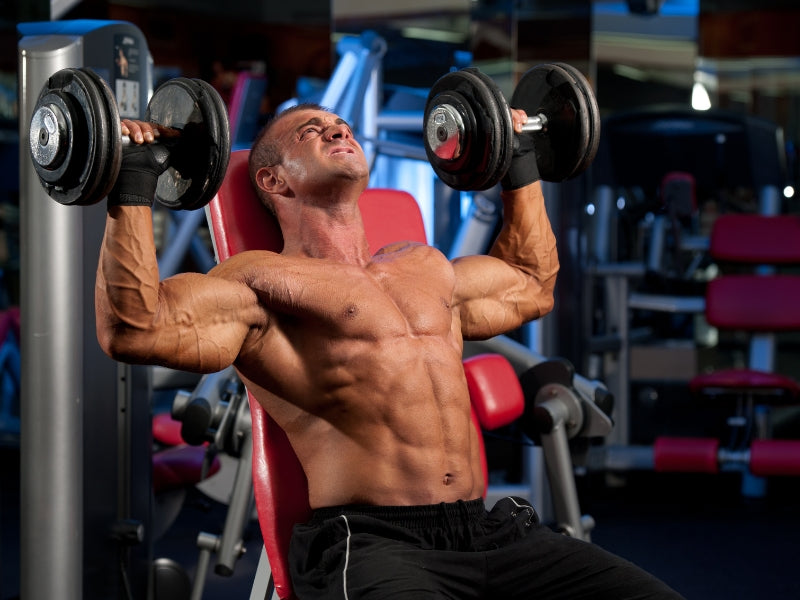
First, we have the seated overhead or shoulder press. Here, you'll see people in a seat position with their backs upright, pushing either a barbell or a pair of dumbbells up over their heads. Generally speaking, the seated overhead press is done with dumbbells, although barbells may also be used.
If you are seated, it means that your back is being supported by the backrest. In this case, you don't need to use your lower back muscles or your trapezius muscles nearly as much to stabilize yourself. The seat rest is doing most of the stabilization for you. In this case, it's mainly your front deltoids, your pectoral muscles and your triceps that are being exercised.
For this reason, if you are a newbie and don't yet have much strength in your shoulders, and haven't mastered proper form yet, it might be best to do a seated overhead press with either a barbell or an EZ bar.
We'll talk more about the differences between barbell and dumbbell overhead presses further below, but the main takeaway here is that it's a bit easier to learn the proper form with the barbell, as dumbbells require more balance and stability on your behalf, and may therefore not be ideal for beginners.
Related Post: What muscles do upright rows work?
Standing Overhead Press
On the other hand, we then have the standing shoulder or overhead press, otherwise known as the military press. The military press, although it may be done with dumbbells, is most often done with a barbell.
In the case of the standing overhead press, this also targets your lower back and upper back muscles to a large degree. The reason for this is that unlike with the seated overhead press, you don't have anything supporting your back.
It's all in your trapezius muscles and your lower back. If you don't have good lower back and trapezius muscles, you'll have a hard time supporting your upper body and standing completely upright while trying to press the weight above your shoulders.
This is why we say that the standing overhead press is best reserved for more seasoned weightlifting veterans who already have a certain degree of strength in both their shoulders and back.
Barbell vs Dumbbell Shoulder Press vs Machine Shoulder Press
What you also need to know about the overhead press is that it can be done with the barbell, dumbbells, or even using the overhead press machine. There are of course notable differences between them and the debate of free weights vs machines is a topic that splits opinions.
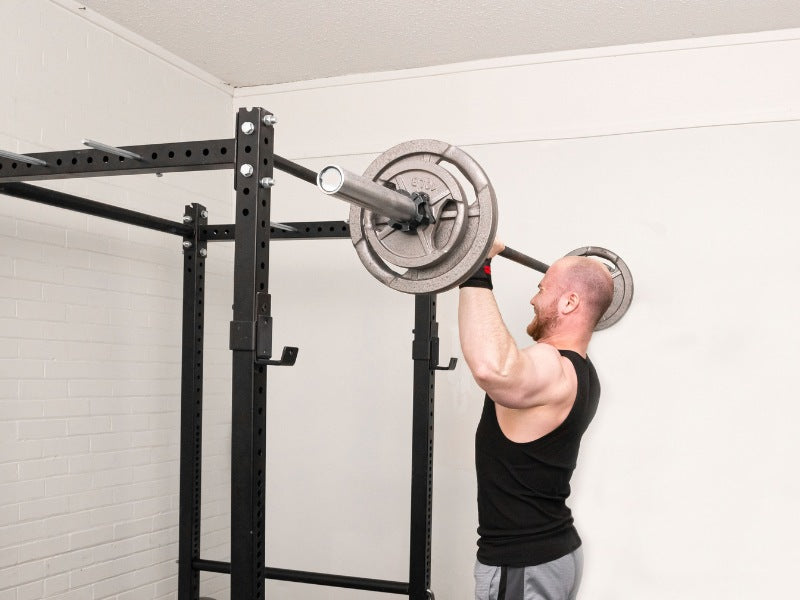
Barbell Overhead Press
The barbell overhead press is generally done standing up, although it may also be done seated. Here, you have a bar with a certain amount of weight resting on your upper chest, which you then push all the way up over your head, and back down.
Due to how your arms are positioned, this tends to work out those three major muscles the most, the anterior deltoids, the upper pectoral muscles, and the triceps. The barbell doesn't require much effort in terms of balance or stabilization, so it doesn't work your stabilizer muscles, such as your trapezius, nearly as much.
Because there is a limited need for balance, people often find it much easier to lift a much heavier weight using a barbell than with dumbbells.
If you're looking to increase your strength above anything else, then it's the barbell overhead press that you need to do. Because of the lack of a need for stabilization, this is ideal for beginners.
Related Post: See our guide to the best landmine exercises.
Dumbbell Overhead Press
We then have the dumbbell overhead press, which sees you using a pair of dumbbells instead of a single barbell. This is the more difficult version when compared to the barbell overhead press. The reason for this is that you have two separate weights instead of one connected with a long bar.
This automatically increases the need for you to balance and stabilize. It's actually quite difficult, especially as you get up there in weight.
Yes, this exercise is fantastic for targeting those three main muscles, the anterior deltoids, the upper pectoral muscles, and the triceps.
However, due to the increased need for you to balance the dumbbells, it also helps work the stabilizer of your muscles. Your trapezius muscles and virtually all of the muscles in your back are required for this.
Therefore, the dumbbell overhead press is a good exercise to try out if you want a more well-rounded approach that works out a larger amount of muscles, although it doesn't target those three main muscles quite as much as the barbell press.
Furthermore, if you're looking to grow a well-rounded appearance with those big round shoulders, then the dumbbell overhead press is the way to go.
Related Post: Build stronger shoulders with our top 4 trap exercises.
Machine Overhead Press
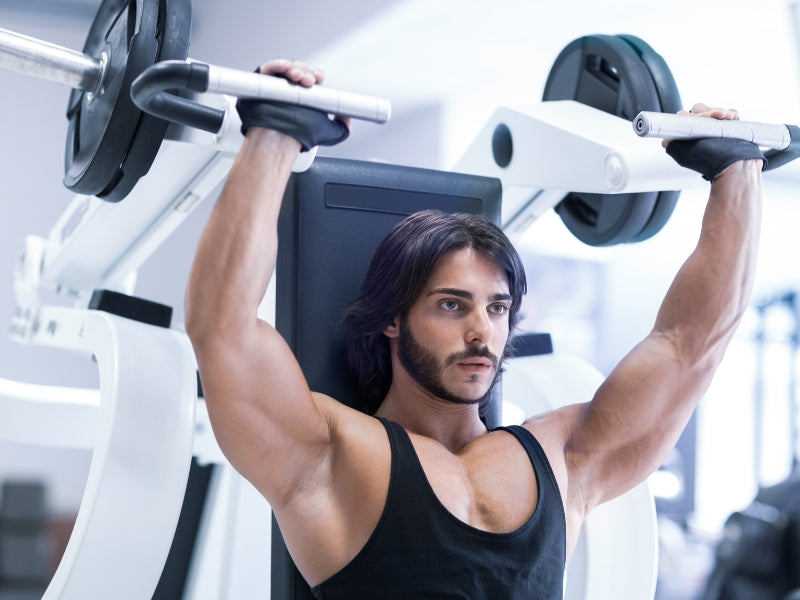
There is also the overhead press machine. If you are a beginner, this is a great way to start. This is because there is virtually no need for stabilization at all. The machine forces you to follow a rigid track, and there is no deviation from that movement.
You don't need any balance or stabilization and can focus solely on pushing weight upwards. This is also ideal for helping you learn proper form. What's cool about the machine overhead press is that it also helps you learn the different grip types here, including the neutral and inside grip.
Related: 6 Cable Shoulder Exercises
Mistakes to Avoid When Doing Overhead Press
There are a few mistakes that you'll want to avoid making when doing the overhead press, so let's find out what these are.
- If doing an overhead press, don't keep your feet too close together. Your feet need to be at least shoulder width apart to help you balance.
- A big mistake that many beginners make is locking out the elbows when doing the overhead press. If you lock out your elbows and fully extend your arms, you run the risk of overextending your arm, which is a serious injury.
- Another beginner mistake is to have the elbows facing outwards. When doing an overhead press, you want to keep your elbows as closely tucked to your sides as possible. You should also have your elbows and wrists properly lined up.
- If using dumbbells or barbells, a mistake is to not follow the proper path. Make sure that you aren't holding the dumbbells or barbell too far forward because you'll end up working different muscle groups, and also risk injury.
- The other beginner mistake you need to avoid making is arching or hyperextending your lower back when lifting. Your spine, neck, and head should all be perfectly in line and vertical.
The Bottom Line on the Overhead Press
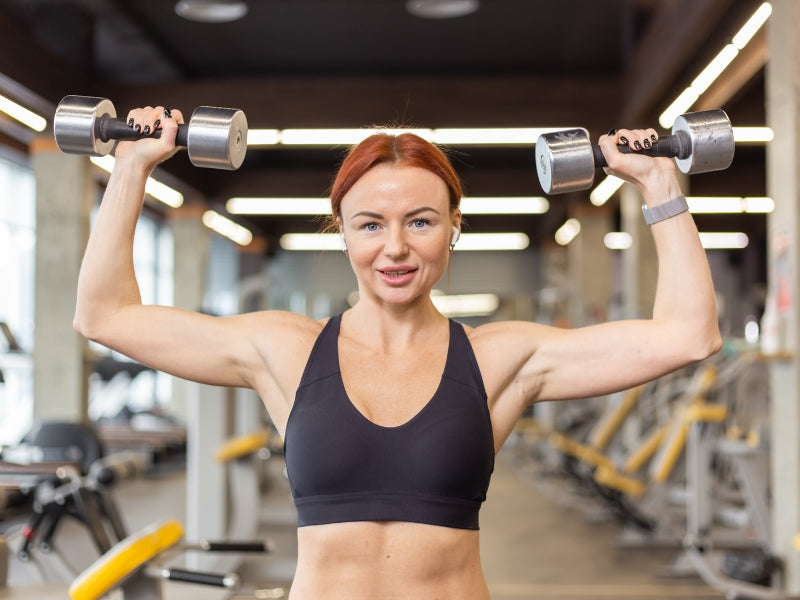
There you have it folks, you should now know everything there is to know about doing the overhead press, especially in terms of the muscles it works. Remember that there are differences between seated and standing overhead presses and using dumbbells, barbells, and the machine all bring different benefits as well.



